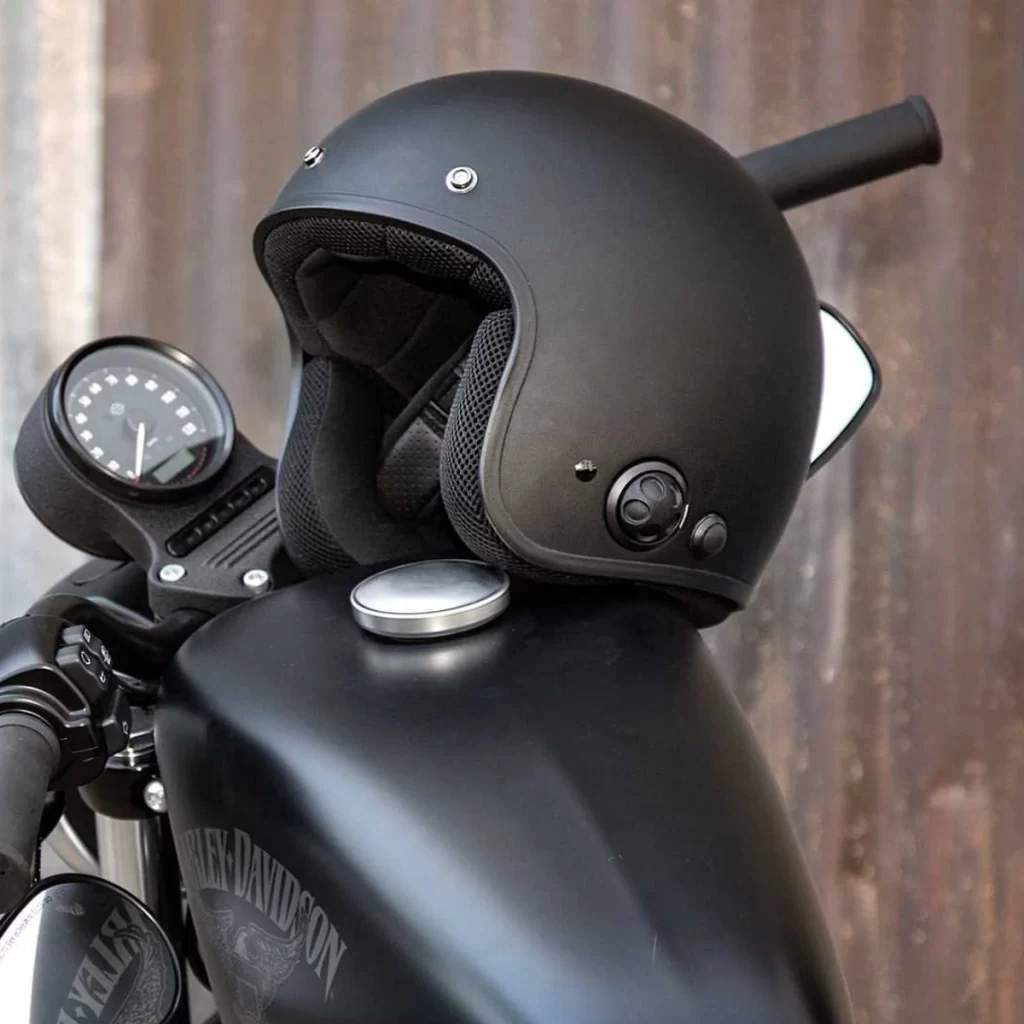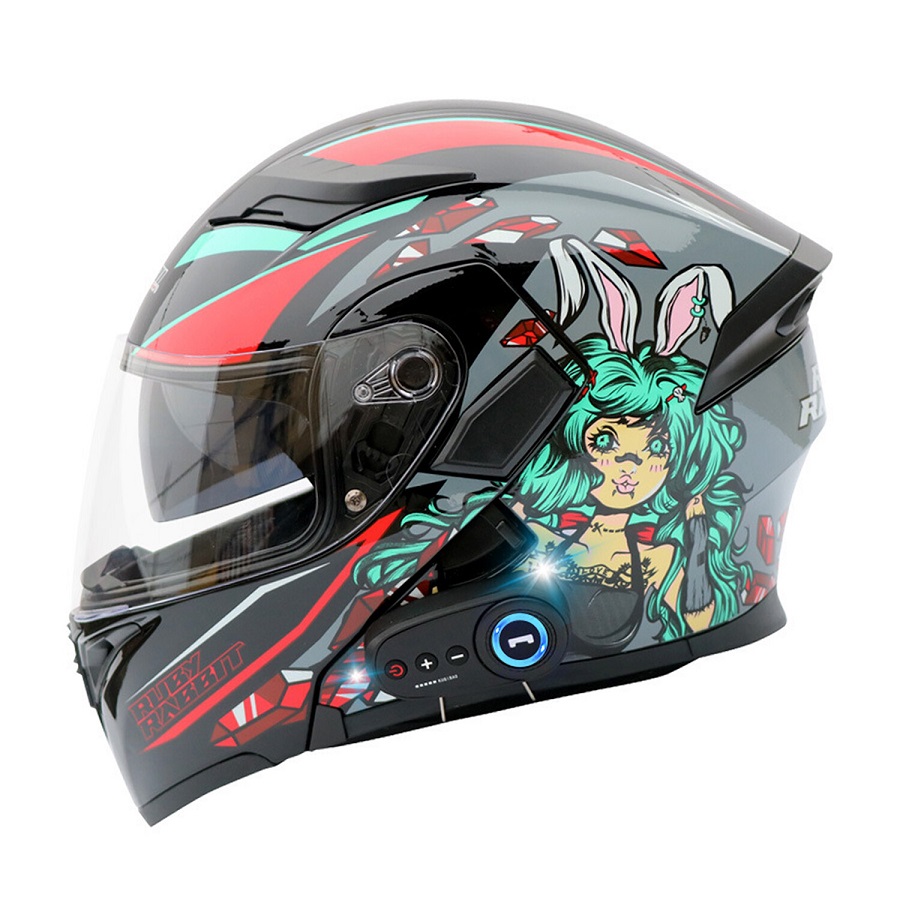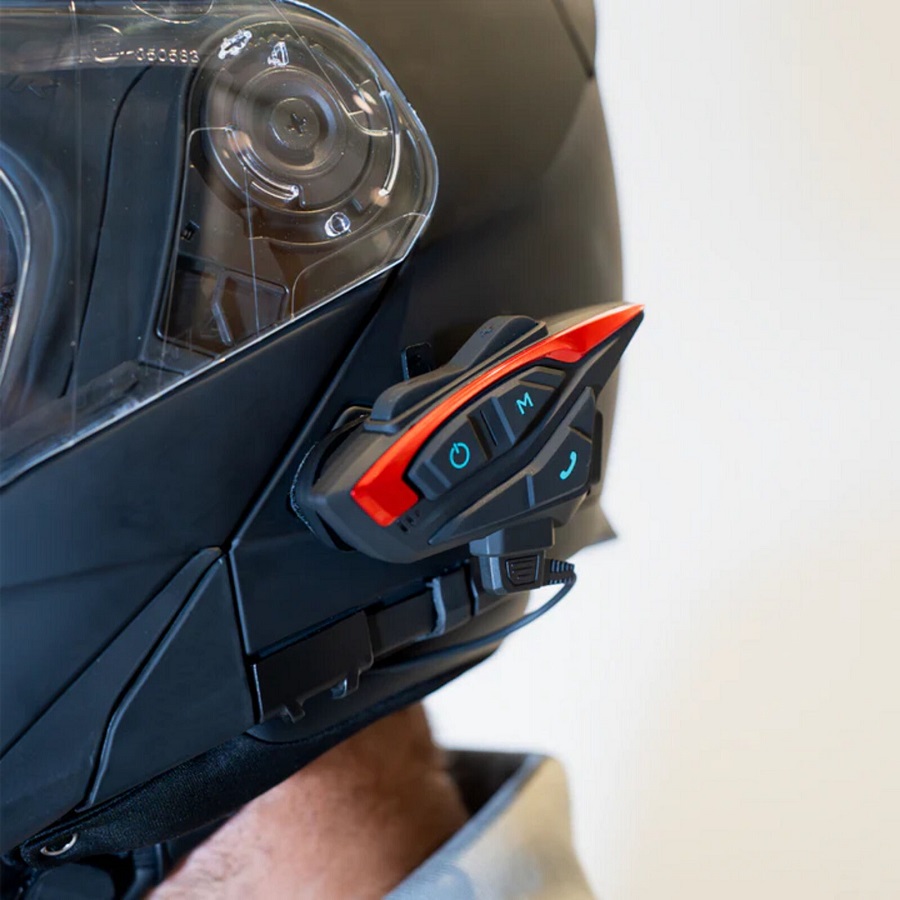Introduction
When it comes to motorcycling, safety and communication should always be top priorities. One of the most revolutionary advancements in this domain is the introduction of Bluetooth technology into motorcycle helmets. Bluetooth motorcycle helmets allow riders to enjoy seamless communication, navigation assistance, and even entertainment without compromising safety. In this comprehensive guide, we will explore everything you need to know about Bluetooth motorcycle helmets, from their features and benefits to how to choose the right one for your needs.
What Are Bluetooth Motorcycle Helmets?
Bluetooth motorcycle helmets are helmets equipped with built-in Bluetooth technology that enable riders to communicate with other riders, receive GPS directions, listen to music, and make phone calls—all hands-free. These helmets often integrate speakers and a microphone, providing an audio interface directly in the helmet for convenience and safer riding.
Key Features to Look For
When shopping for a Bluetooth motorcycle helmet, consider the following key features:
- Sound Quality: The clarity of audio is crucial for communication and enjoyment. Look for helmets with high-quality speakers and noise-cancelling microphones to ensure that sound remains clear, even at high speeds.
- Battery Life: A longer battery life means fewer interruptions during your rides. Many helmets offer several hours of talk time and standby time, but it’s essential to check specific models.
- Range: The communication range can vary between models, typically from 100 meters up to a mile or more. If you often ride with a group, consider helmets with a longer range to maintain connections.
- Ease of Use: Intuitive controls are vital. Look for one-touch buttons or voice command capabilities that allow you to manage music and calls without taking your hands off the handlebars.
- Compact Design: A streamlined design reduces wind noise and drag, which can lead to a more comfortable ride.
- Compatibility: Ensure the helmet is compatible with your devices. Most of them can connect to smartphones, GPS devices, and other Bluetooth-enabled devices.
- Safety Features: Besides providing Bluetooth functionality, helmets should meet safety standards such as DOT, ECE, or Snell certification.
Benefits of Using Bluetooth Motorcycle Helmets
- Enhanced Communication: Stay in touch with fellow riders while you’re out on the road. Whether you’re navigating twists and turns or cruising straight highways, you can easily communicate without having to stop or pull over.
- Hands-Free Navigation: GPS navigation apps on smartphones can be accessed through your helmet, providing turn-by-turn directions without needing to look at your phone.
- Entertainment: Many riders enjoy listening to their favorite tunes or podcasts while riding. Bluetooth helmets allow you to stream music from your phone without compromising safety.
- Safety and Convenience: Being able to make and receive phone calls without taking your hands off the handlebars is not only convenient but also contributes to overall road safety.
- Group Riding: Communication systems designed for group riding allow multiple riders to connect with each other, making it easier to coordinate stops, share routes, or simply enjoy each other’s company.
How to Choose the Right Bluetooth Motorcycle Helmet
Choosing the right Bluetooth motorcycle helmet can be overwhelming due to the variety of options available. Here are some tips to help narrow down your choices:
- Determine Your Riding Style: Different helmets cater to different riding styles—cruisers, sportbikes, and touring motorcycles. Choose a helmet designed for your specific type of riding.
- Set a Budget: Bluetooth helmets can range significantly in price. Establish a budget that considers both features and quality before making a decision.
- Read Reviews: Customer feedback is invaluable. Look for reviews and ratings from other riders who have used the helmets you are considering.
- Try It On: Fit and comfort are critical for any helmet. If possible, try on the helmet in-store to assess fit, weight, and comfort level.
- Purchase from Reputable Brands: Brands with a strong reputation for safety and quality will also likely offer reliable Bluetooth technology. Some recognized names in the Bluetooth helmet market include Sena, Bell, Shoei, and HJC.
Installation and Maintenance
Once you have selected your Bluetooth motorcycle helmet, installing and maintaining it is essential to ensure optimal performance:
- Installation: Most Bluetooth-equipped helmets come pre-installed, but additional accessories like additional speakers or microphones may require installation. Follow the manufacturer’s guidelines for installation steps.
- Regular Maintenance: Keep the helmet clean and regularly check the Bluetooth feature for software updates. Ensure the battery is charged before outings and replace it as necessary.
- Update Your Devices: Make sure that your phone or other connected devices are updated, as software improvements can affect compatibility.
FAQs About Bluetooth Motorcycle Helmets
- Are Bluetooth helmets safe?
Yes, as long as they meet safety certifications. The Bluetooth components are designed to integrate without compromising the helmet’s protective features. - Can you use Bluetooth helmets with any smartphone?
Most Bluetooth helmets are compatible with various smartphones, but check the manufacturer’s specifications for compatibility details. - How do you charge a Bluetooth helmet?
They typically come with USB charging cables. Charging procedures will vary by model, so refer to the user manual. - Do Bluetooth helmets work with intercom systems?
Yes, many Bluetooth helmets feature intercom capabilities allowing seamless communication with other helmets.

The Importance of Safety in Motorcycling
Motorcyclists face unique dangers on the road, with statistics showing that riders are significantly more likely to be injured or killed in accidents compared to occupants of passenger vehicles. With rider safety being a critical aspect of motorcycle culture, helmets remain the primary line of defense against head injuries in the event of an accident.
Bluetooth-embedded helmets offer enhanced safety features that traditional helmets lack. Many models are designed with superior impact resistance, and some come equipped with built-in communication systems that allow for better situational awareness. The ability to communicate with fellow riders or access navigation instructions while keeping both hands on the handlebars is a game-changer for road safety.
Communication on the Road: A Game-Changer for Riders
Communication is a crucial factor for groups of motorcyclists who ride together. The challenges of maintaining connection while riding have been addressed by Bluetooth technology, allowing riders to communicate with each other wirelessly. Riders can enjoy hands-free capabilities that let them talk seamlessly and share real-time information regarding road conditions, directions, or navigational challenges.
Additionally, not all Bluetooth helmets simply connect riders to one another; they often function as a hub for smartphones and other devices. This capability lets riders receive GPS directions, listen to music, or even take phone calls without needing to stop or divert their attention from the road. Such integration helps reduce distractions and enhances overall safety during rides.
Enhanced Comfort: User-Centric Design
Comfort is a vital component of any high-quality motorcycle helmet. Prolonged wear can lead to fatigue or discomfort, especially on longer rides. Bluetooth-equipped helmets are often designed with ergonomics in mind, ensuring a snug fit while accommodating the added weight of the communication equipment.
Many models feature advanced materials, ventilation systems, and padding to enhance comfort. For instance, moisture-wicking liners help to keep the rider’s head dry, while strategic air vents improve airflow, preventing overheating during the ride. Importantly, with various sizing and fit options available, riders can find a helmet that meets their comfort needs.
Integrated Safety Features for Peace of Mind
With an emphasis on safety, many motorcycle helmets come with cutting-edge technology that enhances rider protection. For example, some helmets are equipped with built-in speakers and microphones that provide a secure platform for communication. These setups are typically designed to keep the rider’s hands free, enabling them to concentrate on operating the motorcycle.
Further, certain models offer more advanced features like emergency alerts and accident detection. If an incident arises, these helmets can automatically send location information to emergency contacts or services, which can be crucial in ensuring swift assistance.
Gone are the days of fumbling with maps or checking GPS devices while on the move. A Bluetooth helmet can connect to a smartphone or other navigation device, providing auditory GPS directions directly through built-in speakers. This functionality allows the rider to maintain full focus on the road while receiving turn-by-turn navigation assistance, reducing the likelihood of accidents caused by distraction.
Potential Drawbacks: What to Consider?
While the benefits of Bluetooth-equipped helmets are significant, there are some drawbacks to consider. The integration of Bluetooth technology may increase the cost of the helmet considerably compared to standard models. Riders looking for budget options may find it challenging to source quality Bluetooth-infused helmets within their price range.
Moreover, the lifespan of these helmets may be compromised due to the additional electronics. Exposure to moisture, impacts, and the general wear and tear of motorcycling can potentially damage the Bluetooth components, complicating functionality over time. As a result, regular maintenance and checking the integrity of the electronics become essential.
The Future of Bluetooth Helmets
As technology continues to evolve, so too will the capabilities of motorcycle helmets. Future iterations could include augmented reality displays, advanced noise-cancellation technology, and even more sophisticated safety features that predict and adapt to potential hazards on the road.
Innovations in battery life and ease of use will also drive mainstream adoption among riders. Bluetooth-connected devices are becoming an industry standard, meaning that as more manufacturers enter the market, the options available to consumers will expand.

Conclusion
Investing in a Bluetooth motorcycle helmet can greatly enhance your riding experience, keeping you connected while ensuring safety on the road. By choosing a helmet equipped with the right features and understanding the benefits they offer, you can make informed decisions that will elevate your journeys. As you gear up for your next ride, remember that staying connected makes every adventure safer and more enjoyable. So, get your Bluetooth helmet ready and hit the road with confidence!

Leave a Reply